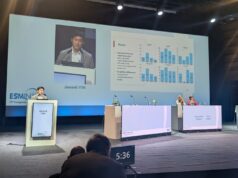A case series of large-vessel stroke in patients younger than 50 years of age has been published in The New England Journal of Medicine. Authors, Thomas J Oxley and colleagues from Mount-Sinai Health System, New York, USA, write that during a two-week period (23 March–7 April), five patients presented with new-onset symptoms of large-vessel ischaemic stroke, all of whom tested positive for COVID-19.

By comparison, Oxley and the team acknowledge that the fortnightly rate over the previous 12-months, for patients under the age of 50 presenting with large-vessel stroke, was 0.73.
The mean National Institutes of Health Stroke Scale (NIHSS) score for the five patients, on admission, was 17. “Two patients in our series delayed calling an ambulance because they were concerned about going to a hospital during the pandemic,” the authors note.
This case series adds to growing concerns of large-vessel stroke as a presenting feature of COVID-19 in the young. Oxley et al allude to a retrospective study of data from the outbreak in Wuhan, China, that depicted a 5% incidence of stroke among hospitalised patients with COVID-19. According to the study, the youngest patient was 55 years of age. Moreover, the authors highlight that large-vessel stroke was reported in association with the 2004 SARS-CoV-1 outbreak in Singapore, and they call for further investigation into the association between large-vessel stroke and COVID-19 in young patients, given the evidence.
The case report details the symptoms and medical management of one patient in particular. Oxley and colleagues write that in a previously healthy 33-year-old woman, coughs, headache, and chills lasting one week developed. She proceeded to have progressive dysarthria with both numbness and weakness in the left arm and leg, over a period of 28 hours.
“She delayed seeking emergency care because of fear of COVID-19,” they write, adding that when she did present to the hospital, the NIHSS score was 19, and CT angiography showed a partial infarction of the right middle cerebral artery, with a partially occlusive thrombus in the right carotid artery at the cervical bifurcation.
“Patchy ground-glass opacities in the bilateral lung apices were seen on CT angiography,” notes Oxley and others. The team initiated antiplatelet therapy for this patient, which was subsequently switched to anticoagulation therapy.
The authors remark that stroke workup with echocardiography and MRI of the head and neck did not reveal the source of the thrombus. Repeat CT angiography on hospital day 10 showed complete resolution of the thrombus, and the patient was discharged to a rehabilitation facility.
The New England Journal of Medicine writes that a series of case reports are being published, intended to offer important teaching points or novel findings. According to the journal, they should be viewed as observations rather than recommendations for evaluation or treatment.









